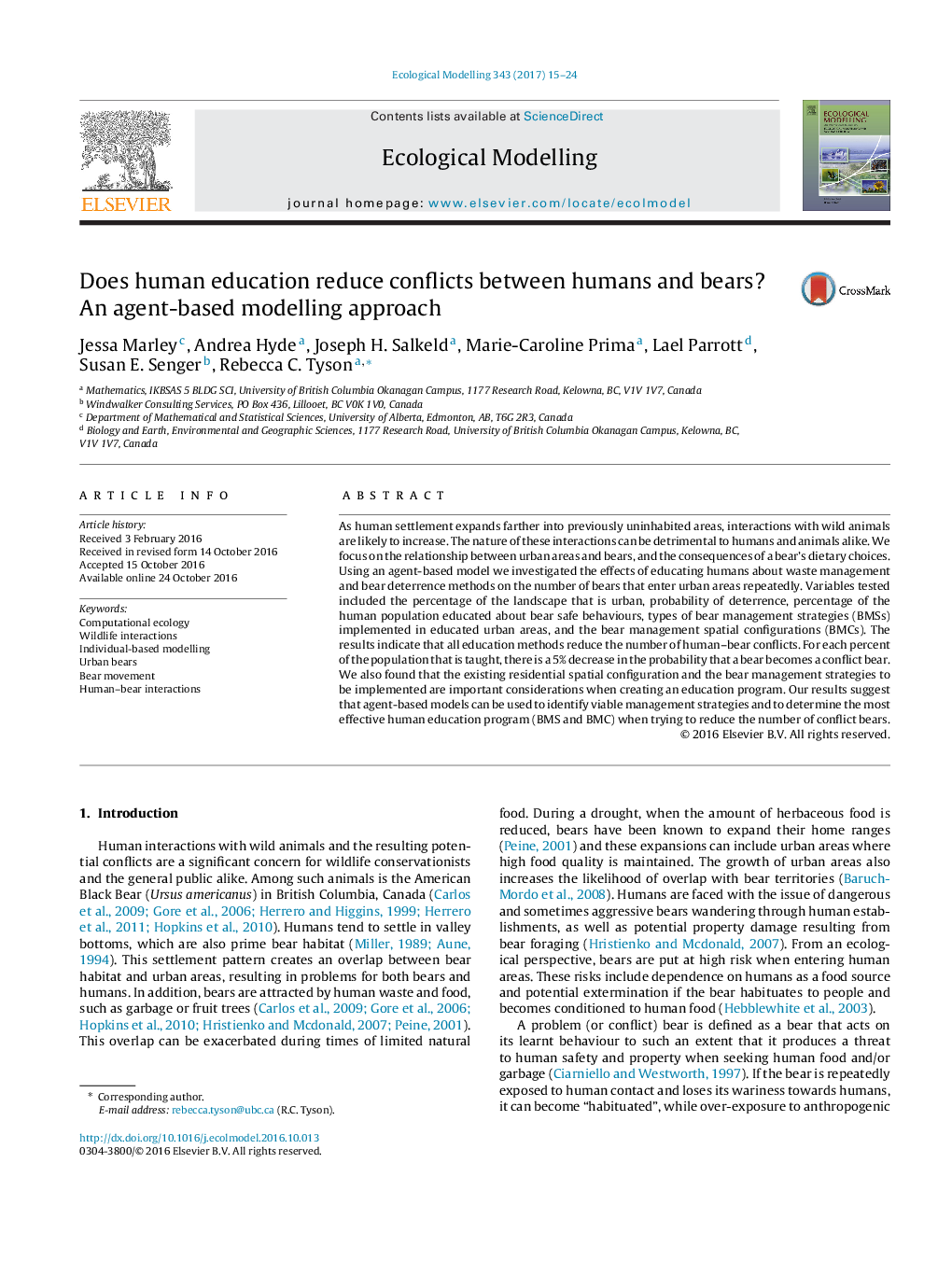| کد مقاله | کد نشریه | سال انتشار | مقاله انگلیسی | نسخه تمام متن |
|---|---|---|---|---|
| 5742299 | 1617404 | 2017 | 10 صفحه PDF | دانلود رایگان |
- Agent-based models can be used to examine the effect of human wildlife education.
- We explore the spatial dynamics of bear movement within a theoretical landscape.
- As more urban cells are educated, there is a significant drop in conflict bears.
- Both spatial placement of educated humans and techniques taught are significant.
- With a 1% increase of educated cell numbers, we see a 5% decrease in conflict bears.
As human settlement expands farther into previously uninhabited areas, interactions with wild animals are likely to increase. The nature of these interactions can be detrimental to humans and animals alike. We focus on the relationship between urban areas and bears, and the consequences of a bear's dietary choices. Using an agent-based model we investigated the effects of educating humans about waste management and bear deterrence methods on the number of bears that enter urban areas repeatedly. Variables tested included the percentage of the landscape that is urban, probability of deterrence, percentage of the human population educated about bear safe behaviours, types of bear management strategies (BMSs) implemented in educated urban areas, and the bear management spatial configurations (BMCs). The results indicate that all education methods reduce the number of human-bear conflicts. For each percent of the population that is taught, there is a 5% decrease in the probability that a bear becomes a conflict bear. We also found that the existing residential spatial configuration and the bear management strategies to be implemented are important considerations when creating an education program. Our results suggest that agent-based models can be used to identify viable management strategies and to determine the most effective human education program (BMS and BMC) when trying to reduce the number of conflict bears.
Journal: Ecological Modelling - Volume 343, 10 January 2017, Pages 15-24
